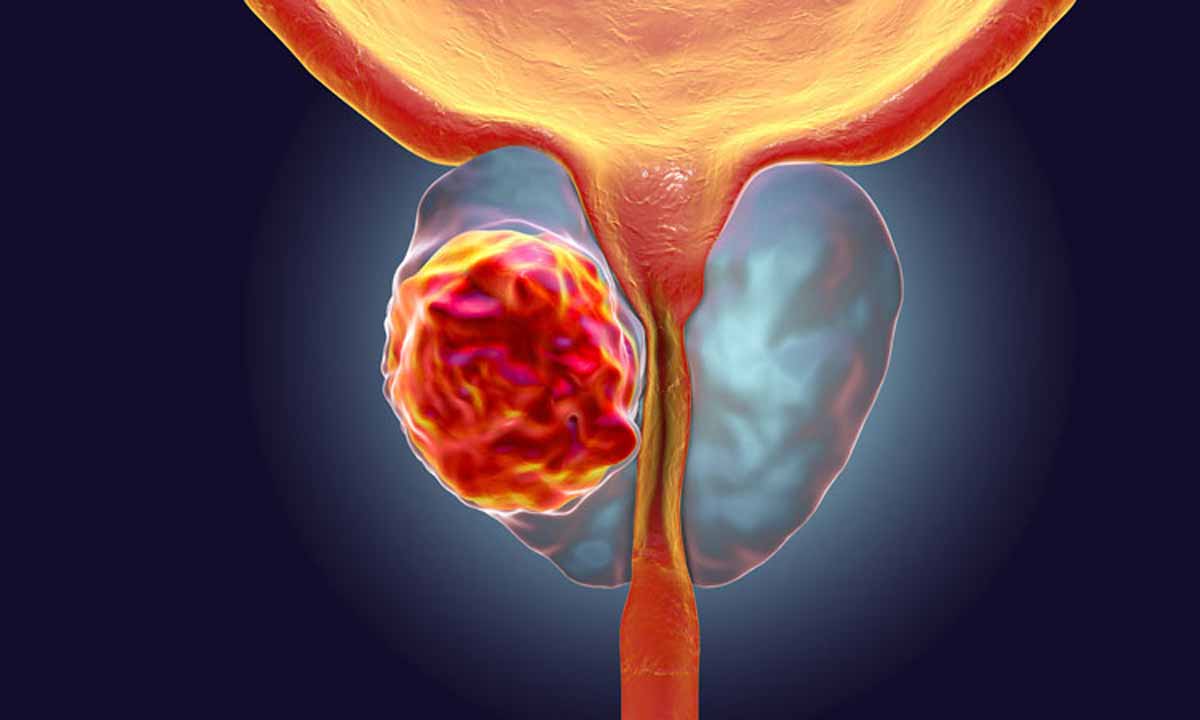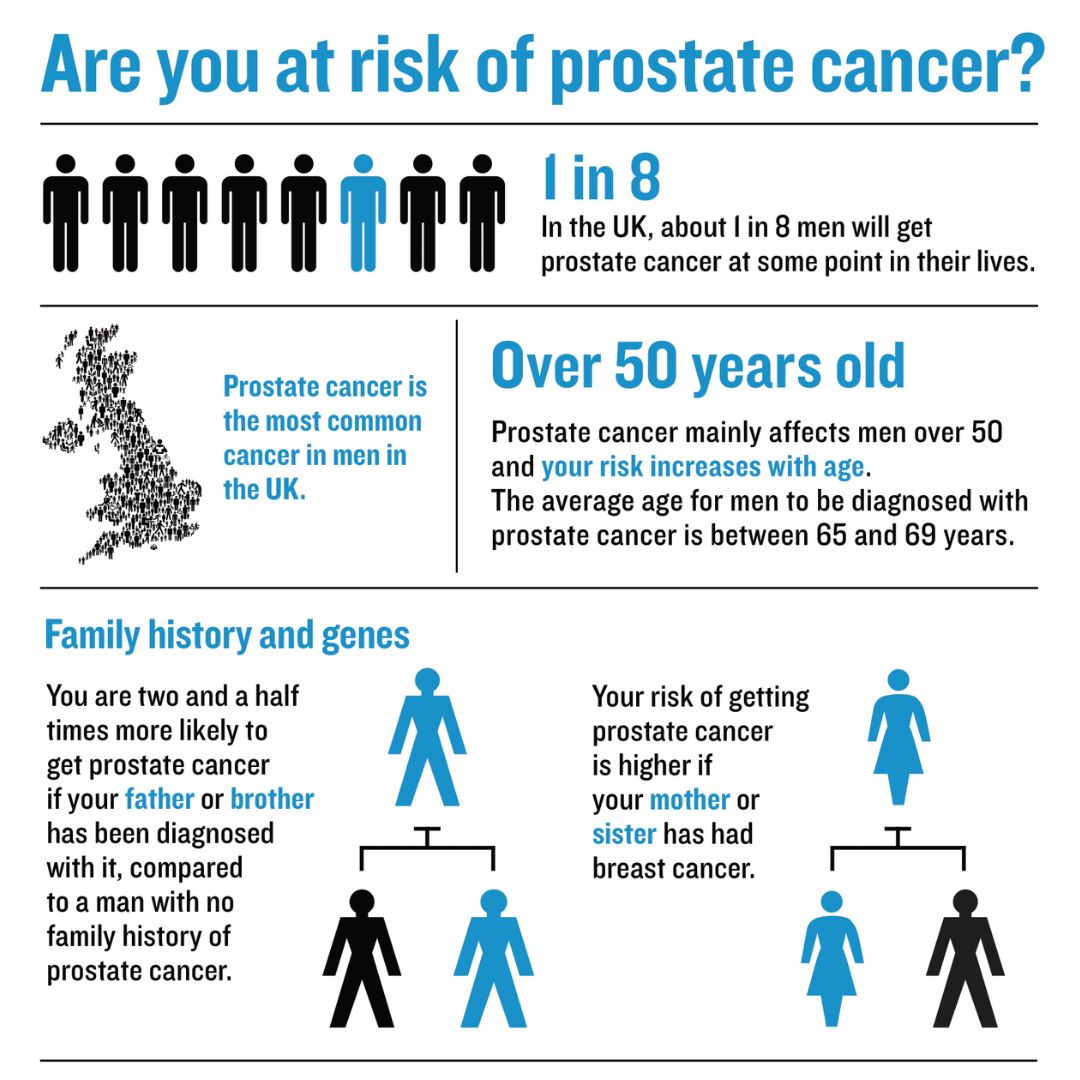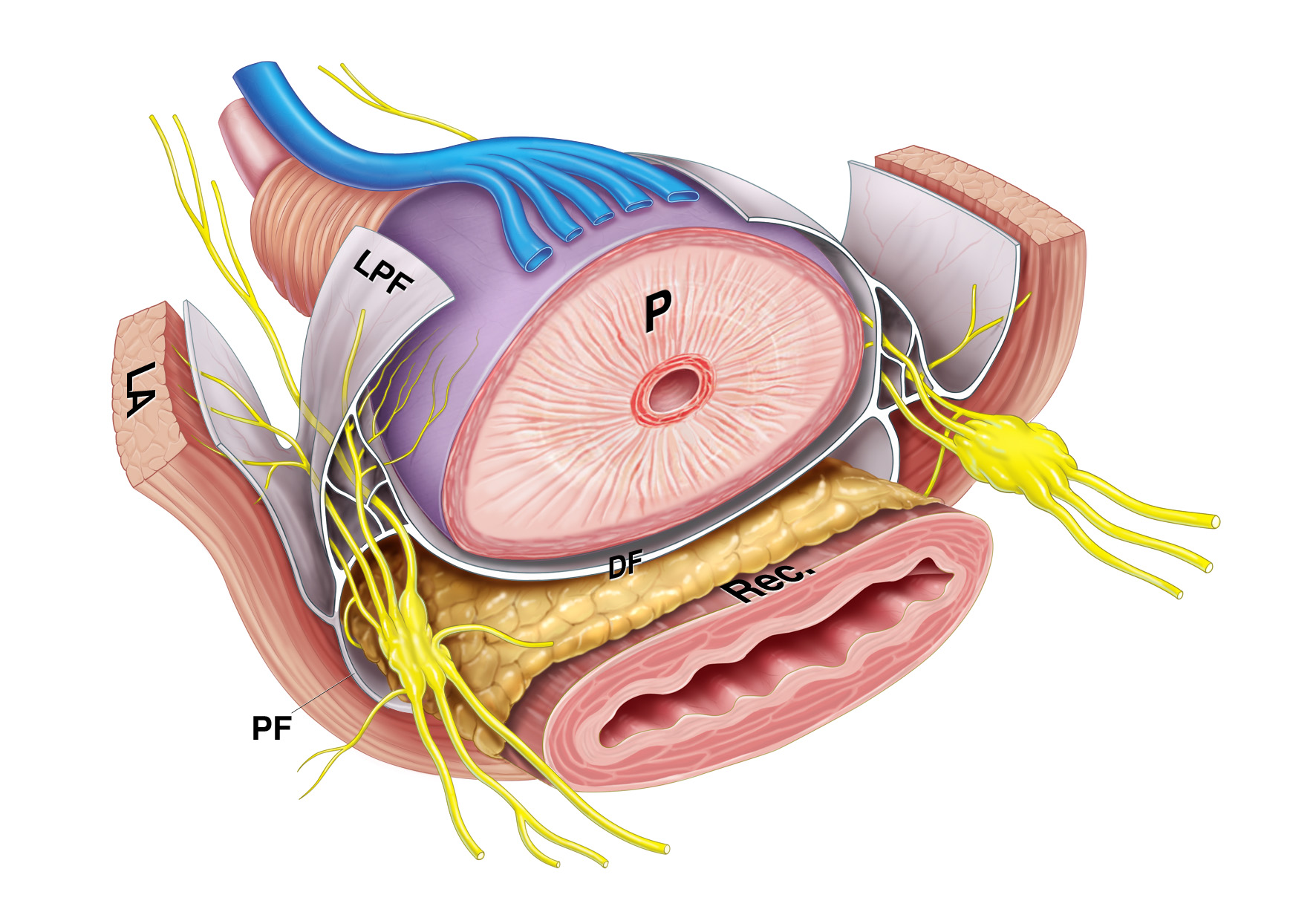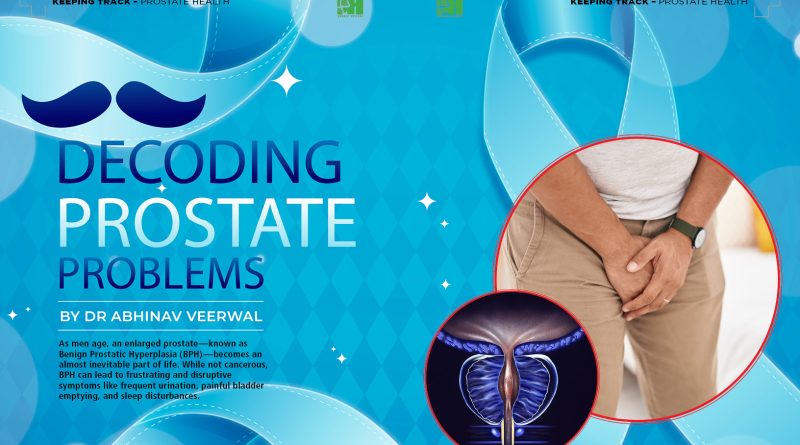Decoding Prostate Problems
 As men age, an enlarged prostate—known as Benign Prostatic Hyperplasia (BPH)—becomes an almost inevitable part of life. While not cancerous, BPH can lead to frustrating and disruptive symptoms like frequent urination, painful bladder emptying, and sleep disturbances.
As men age, an enlarged prostate—known as Benign Prostatic Hyperplasia (BPH)—becomes an almost inevitable part of life. While not cancerous, BPH can lead to frustrating and disruptive symptoms like frequent urination, painful bladder emptying, and sleep disturbances.
By Dr Abhinav Veerwal
As men age, their prostate gland tends to enlarge, a condition known as Benign Prostatic Hyperplasia (BPH). This is a common occurrence, affecting approximately 50 per cent of men by the age of 50 and nearly 80 per cent by the age of 80. The prostate, a chestnut-shaped gland that is part of the male reproductive system, plays a crucial role in producing seminal fluid. While BPH is not cancerous, it can lead to significant health concerns, affecting the quality of life for many men.
Common Symptoms of Prostate Disorders
Men with BPH may experience an increased frequency of urination, particularly at night, which can significantly disrupt sleep patterns. A sudden and urgent need to urinate, difficulty in initiating or maintaining the flow of urine, painful urination, and a sensation of incomplete bladder emptying are also common symptoms. Some individuals may also experience terminal dribbling or unintentional leaking of urine. It is essential for men experiencing these symptoms to consult a urologist, as early diagnosis and management can prevent complications.
These symptoms tend to develop gradually and may worsen over time. However, some men may have an enlarged prostate without noticeable symptoms, while others experience significant discomfort. In a small percentage of cases, untreated BPH can lead to urinary retention, where the bladder is unable to empty completely. This risk increases with age and the severity of symptoms. Additionally, other conditions such as prostate or bladder cancer, kidney stones, and overactive bladder can cause similar symptoms, making it crucial to seek medical evaluation.
Prevention
Since BPH is primarily an age-related condition, it is currently irreversible. However, adopting certain lifestyle modifications may help delay its onset. Maintaining a healthy diet, engaging in regular physical activity, reducing stress levels, and avoiding smoking are beneficial in promoting overall prostate health. While these measures cannot completely prevent BPH, they can contribute to better urinary function and overall well-being.

How to Assess Your Prostate Health
Regular prostate examinations are recommended for men starting at age 50, or earlier if they experience symptoms or have high-risk factors. Understanding key health indicators is also crucial. The American Urological Association Symptom Score (AUASS) helps assess the severity of BPH symptoms, while the Prostate-Specific Antigen (PSA) test aids in detecting prostate abnormalities, including cancer. Additional diagnostic tools such as Digital Rectal Examination (DRE), Urinalysis, Uroflowmetry, Rectal Ultrasound, and Post-Void Residual Volume measurement may be required for a thorough evaluation. These tests are readily available at urology clinics and provide valuable insights into prostate health.
Potential Medical Consequences of BPH
If left untreated, BPH can lead to several complications, including urinary retention, urinary tract infections, bladder stones, blood in the urine, incontinence, and decreased kidney function. These complications can significantly impact an individual’s quality of life, underscoring the importance of timely medical intervention.

BPH Treatment
The treatment of BPH aims to reduce urinary symptoms and improve the patient’s overall comfort. For men with mild symptoms, a “wait and watch” approach is often recommended, as symptoms may improve without intervention. However, those with moderate to severe symptoms usually require medical treatment.

Lifestyle Changes
Behavioural modifications can be particularly beneficial, especially when used alongside medication. Patients are advised to avoid excessive fluid intake before bedtime or going out, as well as to reduce the consumption of diuretics such as caffeine and alcohol. Pelvic floor muscle training, including biofeedback techniques, may be particularly helpful for individuals experiencing urgency symptoms. Certain medications, such as antihistamines and decongestants, can worsen BPH symptoms or cause urinary retention and should be avoided.
For those troubled by frequent urination, strategies such as double voiding—where one attempts to urinate again after a brief pause—can be helpful. However, patients should avoid straining or pushing excessively, as this can lead to additional complications.
Medications
Various medications are available to manage BPH, including alpha-blockers, phosphodiesterase inhibitors, and alpha-reductase inhibitors. Men who also suffer from erectile dysfunction may find phosphodiesterase inhibitors particularly beneficial. Most men who begin medication for BPH will need to continue treatment indefinitely unless they opt for surgical intervention.

Combination Treatment
In some cases, a combination of an alpha-blocker and an alpha-reductase inhibitor may be recommended. This approach is particularly beneficial for men with severe symptoms, a significantly enlarged prostate, or those who do not respond well to the highest dose of an alpha-blocker alone.
Transurethral Procedures
For patients whose symptoms do not improve with medication, minimally invasive procedures to remove or destroy excess prostate tissue may be considered. These procedures are performed using a special scope inserted through the urethra, and the choice of procedure depends on factors such as prostate size, location of excess tissue, the surgeon’s expertise, and patient preferences. A urologist can help determine the most suitable course of treatment.
Surgical Options
Surgical intervention is often the most effective treatment for BPH in appropriately selected patients. Transurethral Resection of the Prostate (TURP) is considered the gold standard for surgical management. Surgery offers long-term relief and has a proven track record of success. Most patients can return home shortly after the procedure, with a urinary catheter required for only a short duration. Normal activities can typically be resumed within 24 to 48 hours, and symptom improvement is usually noticeable within 8 to 10 weeks post-treatment.
Takeaways
It is essential for the general population to be well-informed about the signs and symptoms of BPH. Early detection can prevent complications and improve overall health outcomes. Both medical and surgical treatments for BPH are highly effective, and TURP remains the preferred option for patients requiring intervention. Awareness, timely diagnosis, and appropriate treatment can significantly enhance the quality of life for men affected by this condition.
(The author MBBS, MS General Surgery, MCh Urology, is a practicing urologist with a keen interest in lower urinary tract diseases. He is currently based in Noida and specialises in the diagnosis and treatment of prostate disorders and other urological conditions.)

